What’s your MCPH?
BY BRIAN FRANK
Hey, Hammer fans!
Brian Frank here talking about a really important subject. “Got to get this off my chest before I explode," as the old headline used to read. For 36 years, I've been dealing with the question of how many calories per hour one should consume when exercising, be it an hour, 3 hours, 6 hours, or 12-hour multi-day events. Hint – Less is BEST!
Hammer on.
This question vexes many athletes, and unfortunately, there is so much myth and misinformation surrounding it. The high-calorie crowd, as we call them, the experts of the day, were saying the same thing about how many calories per hour, with some going as high as 400, even 600! Silliness!
Maybe that's what you're burning. Doesn't really matter. You can't consume anywhere near that much. So, now we have a whole new generation of research, sort of. The outcome of a couple of questionable studies touting 60 to 90 grams an hour of carbohydrate is the basis for the "new" 60-90 grams per hour or recommended intake. Take a closer look at that research - Test subjects operate at 50% of max watts! What?
That's right. Participants are walking along at a 95 beats per minute heart rate, not so much. We're constantly exercising at a much higher heart rate than that.
You've probably tried higher calorie intake and had GI distress, plus all kinds of fun problems that go with it. So we invented this concept that less is best for optimal fueling in response to constantly dealing with athletes suffering from overconsumption of calories. So I have a little system I call the minimum calories per hour - MCPH.
MCPH is the number you want to know. You want to determine your minimum calories per hour that allows you to exercise at the limits of your ability and fitness, not slow down, and not suffer GI distress or any other cramping problems. It comes down to about one calorie per pound of body weight for most athletes.
That usually ends up being the sweet spot, plus or minus a few. So, for most athletes, we're talking 100 to 180 calories an hour. Nowhere near this 240 to 360 calorie craziness we're hearing. This high-calorie take also contradicts human physiology. We know that the human liver can return about 1 gram of carbohydrate per minute into Glycogen.
So there you go. Four calories per gram, times 60 minutes in an hour, equals a 240-calorie per hour theoretical ceiling. So why try to exceed that? And more to the point, why try to stuff so many calories down your throat when you just want to go pedal, swim, bike, run, whatever?
So do that and consume a lot less calories. You'll be happier, your stomach will be happier, and you can forget about all the high-calorie fuss and mus. So less is best. 100-180 calories an hour. One calorie per pound of body weight, and you'll be in the ballpark.

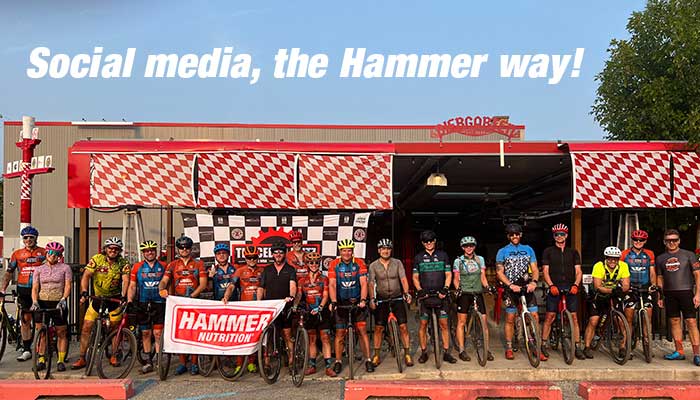

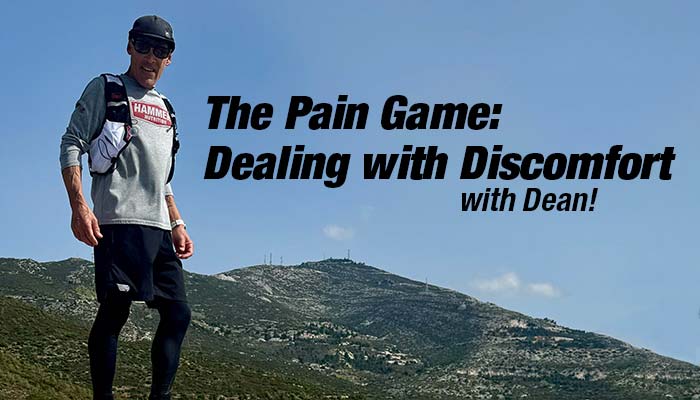
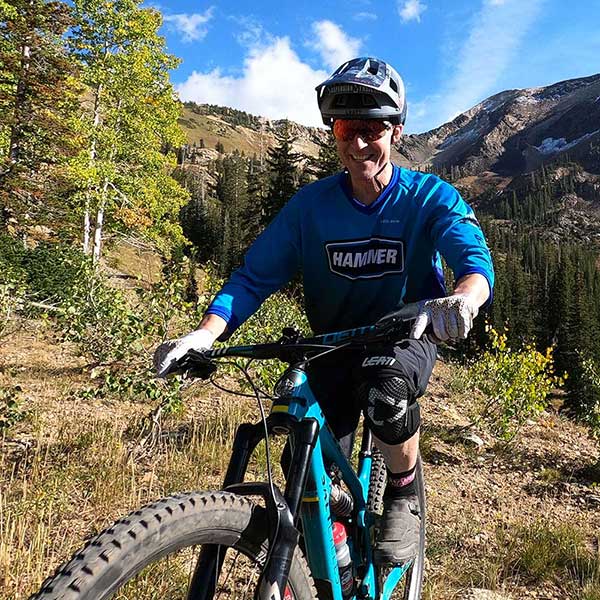
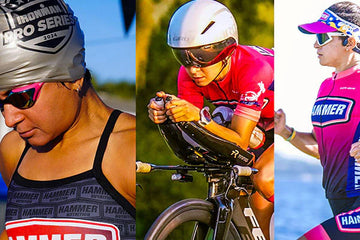
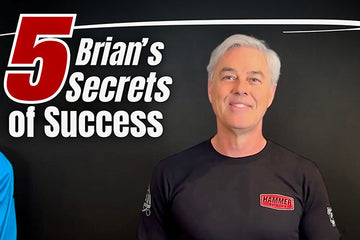
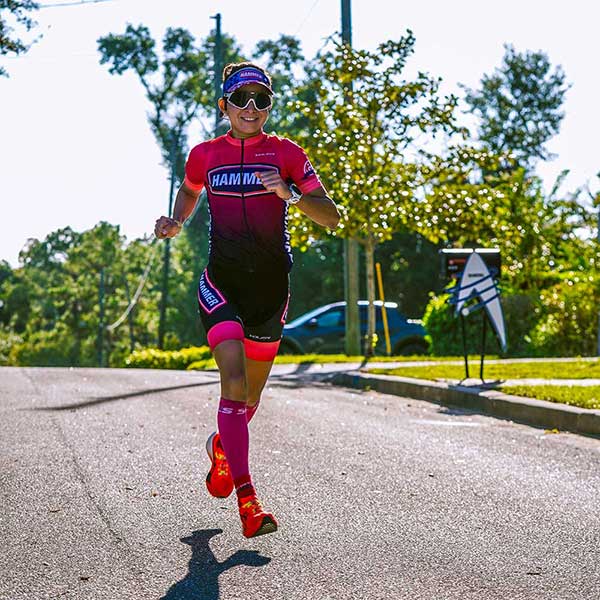
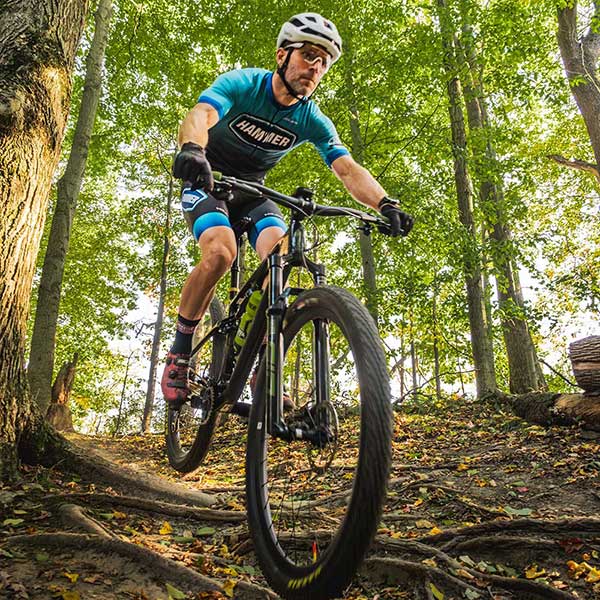


21 comments
so as a heaver runner and cyclist at 230lbs that does long distance 5+ hrs. I should be at the top end maxing out the amount i consume per hour. So on a 5 hr run i avg 4000 cals burned. (it take alot on energy yo move this mass) Accounting on the 1500 cals of glycogen stores we start with, the 240 per hr i can absorb, this leaves me in a deficit 1300 cals of energy over that time frame. Trying to understand what else i can do to make up for this cal discrepancy? i enjoy the long miles running or cycling, just not the bonks.
———
Hammer Nutrition replied:
Hi Joe, thank you for your question. It seems there is one thing you are missing here – fat as your primary fuel source during these extended exercise periods. IF you begin exercising in a fasted state (meaning you have had no calories whatsoever for 3 hour or more), between 2/3 and 3/4 of the calories you metabolize can come from readily available fat stores. This also allows your body to use glycogen stores more gradually. That only leaves about 1,000-1,300 or calories needed from external sources and your 240 cal/hour intake will cover that just about perfectly. The idea is to burn more fat, not consume more calories. If you have not already read my 5 Secrets to Success – please do so, it will explain all of this very clearly. https://hammernutrition.com/collections/books/products/5-secrets-of-success. We also have fueling guides for long distance events on our site under the knowledge tab. Of course we are also available via phone, live chat or email if you’d like to discuss further. BDF
I’m confused about your comment that the limiting factor is the livers ability to convert glucose to glycogen. During exercise, consumed glucose is used directly, without having to go through glycogen, which is a storage form. I was under the impression that the limiting factor is absorption by the gut.
———
Hammer Nutrition replied:
The limiting factor is, as you correctly stated, how well or poorly a carbohydrate solution is absorbed by the gut. That impacts how efficiently the liver (via glycolysis) is able to produce ATP during exercise, as well as its ability to store blood glucose as glycogen post-exercise.
Your article validates my calculations! Yay! I am very OCD when it comes to my calorie intake on training runs and race events (especially long distances). I’ve been mixing 3 scoops of Perpetuem 2.0, which give me 2 hrs @ 135 cph. I put them in hammer flasks and each serving I take every 24 mins. Works like a charm and I have absolutely no GI distress. I just need to mix the flavors around for variety.
———
Hammer Nutrition replied:
Hello Pam, thank you for your comments and support! I wonder what % of participants in the last ultra you did could say the same thing about their fueling program? “Less is Best” and “fuel right, feel great” are not just marketing slogans I came up with. They are truthful statements. BDF
Your simple math makes sense, but it simply doesn’t jibe with real-world experience. All the ProTour cycling teams employ full-time nutritionists, doctors and physiologists now, and all have been experimenting with their athletes during pre-season training. They would not be consuming these mega calories if it didn’t work. On a personal level, I am a now-65 year old mtb, TT and gravel racer who has enjoyed a good deal of success over the last 35 years of competition. For all those years I followed the rule that your body can process only about 30 percent max of what you’re burning. When I am on rivet in a 2-3 hour mtb or gravel race, I figure I am burning 800+ calories per hour, so I typically planned on consuming 200-300 per hour. My problem has always been finishing strong. Regardless of how much I train I always blew up in that last half hour and suffered like a dog to get to the finish. But a couple of years ago as the carb craze gained momentum, I began experimenting by upping my intake to about 400 per hour. The result? I began having some of my best races ever, hammering right to the tape without blowing sky-high like usual. So while the casual athlete or age-grouper who tools along for fun burning 400 calories an hour certainly doesn’t have to supplement, those of us battling for a podium certainly do.
———
Hammer Nutrition replied:
Hello James, thank you for your comments. We’ll have to agree to disagree here and accept the fact that you are a unique person. That being said, there’s no basis in human physiology or research data to support your contention and experience. You and the entire pro peleton must have magical livers that can convert almost twice as much blood glucose to glycogen as has ever been documented AND a magic stomach that can drain with massive carb content in it. In order for your body to be able to do what you suggest, you lliver would need to convert almost 6.75 grams per minute to glycogen (highest recorded in research is 4.6) and be able to get almost 70 oz of water to pass through your gut each hour (research says 24-30 oz. or so is the upper limit). Next, there are many factors that could lead to you running out of gas before the end of an intense mtb race. For example, if you are/were eating a meal 60-90 minutes before the start, that would do it. No fat burning possible, blowing through glycogen prematurely, etc. Which also brings up your calculations and not allowing for any fat metabolism in your energy demands. Yes, even at red line intensity, when exercising for more than 60-70 minutes, fat metabolism occurs, a lot more if you observe the 3 hours pre-race window for calories. I completely reject your notion that my “Less is best” fueling philosophy is only for casual athletes. I’ve spent 37 years helping thousands of athletes achieve personal bests, countless podiums, national championships, world championships, FKT’s and world records. In that time, I’ve met a couple of unicorns, but the overwhelming majority (talking 99 out of a 100) cannot even tolerate 60 grams per hour without getting sick. Lastly, if you want to consume 100 grams of carbs per hour during training and racing, I’ve got several great products like Hammer Gel, HEED, Perpetuem and Sustained Energy that you can use. BDF
I have been using Hammer Nutrition products since 2017. It is the only product I have used that has not led to cramping, GI distress and bloating. I have competed and podiumed at 24, 12, 6 and 3 hour mtb races as a Masters Athlete (I’m 66) and HEED and Perpetuem have been my riding staples. It’s always great to get reminders as to why I continue to fuel the way Hammer taught me since we are surrounded by the high calorie, high carb, sugar crowd. Thank you for the continuing support and education.
———
Hammer Nutrition replied:
Hi John, thank you for your comments and confirmation that our fueling strategy works for podium bound athletes, as well as everyone else. Keep on hammering! BDF